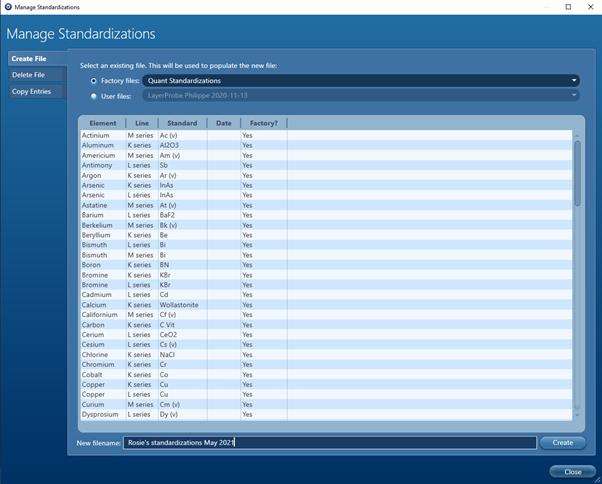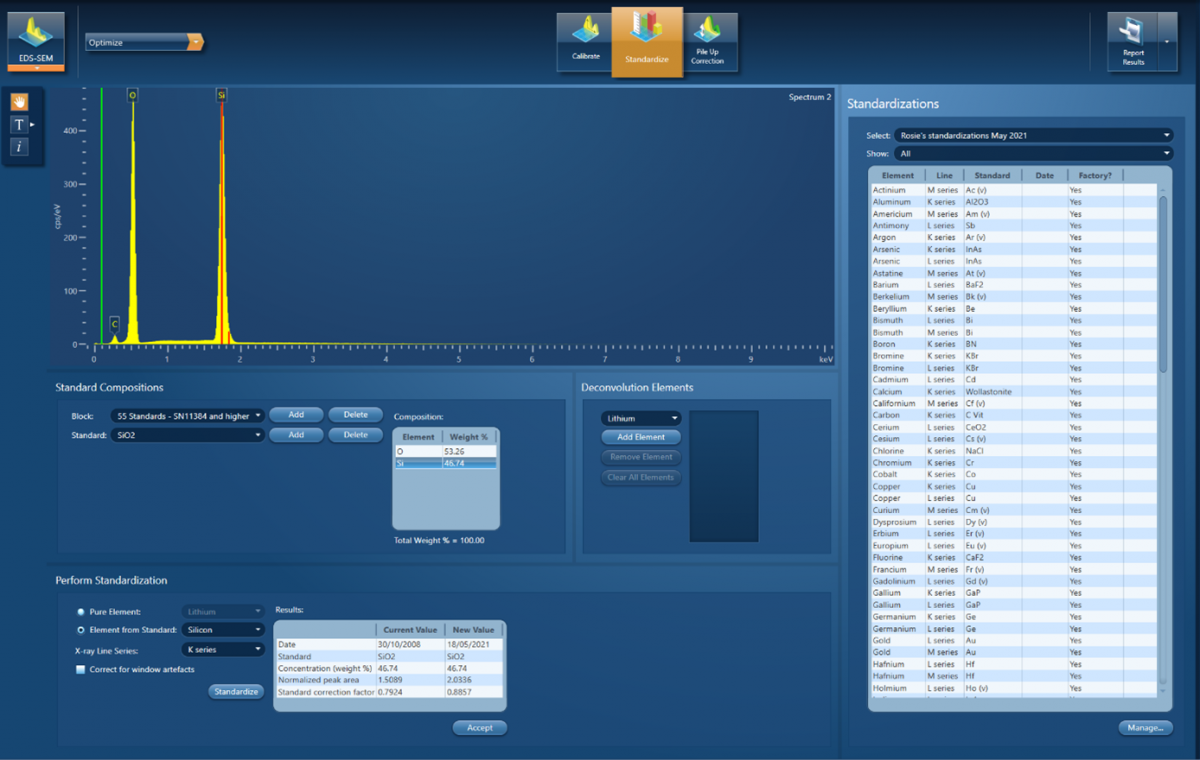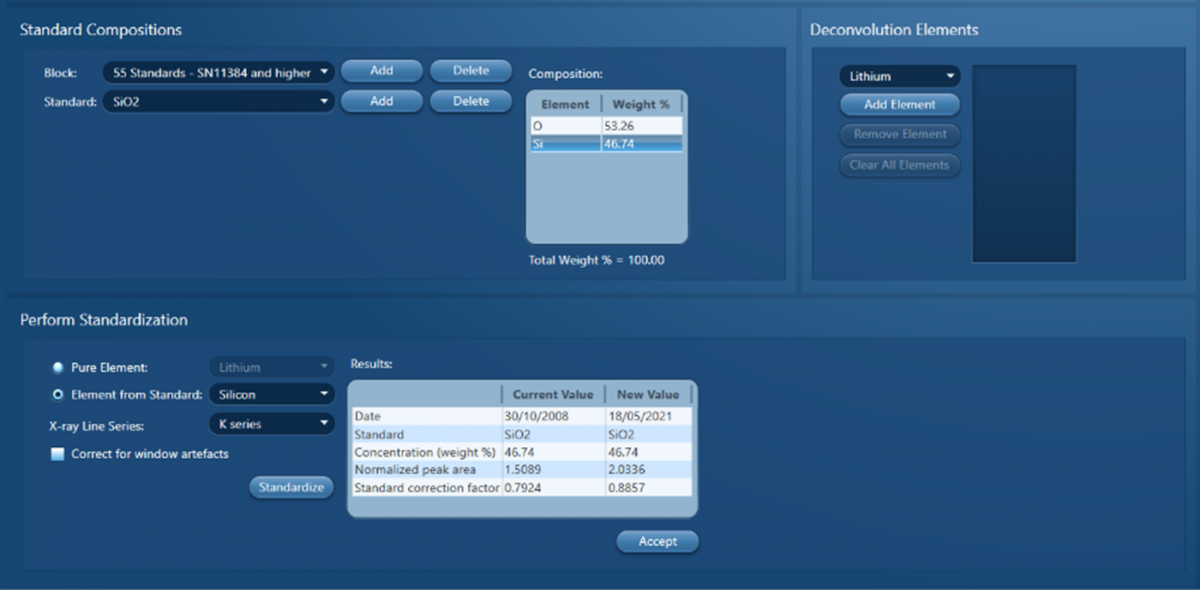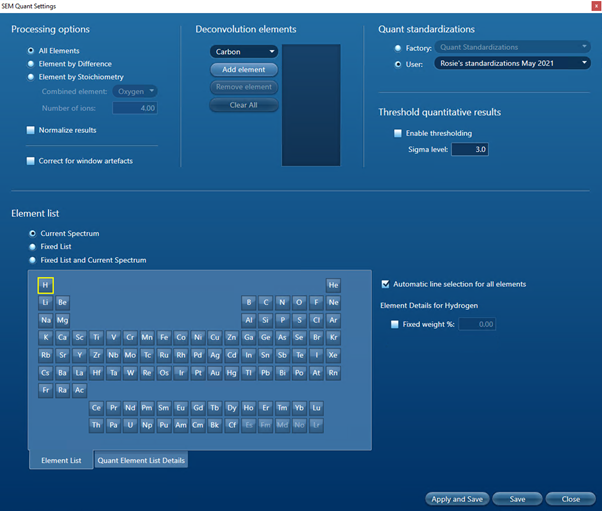产品
FIB-SEM
Nanomanipulators
OmniProbeOmniProbe Cryo软件
AZtec3DAZtecFeatureAZtec LayerProbeTEM
Hardware
EDSUltim MaxXploreImaging
软件
AZtecTEM
26th May 2021 | Author: Dr Rosie Jones
As stated by Simon in his last blog post, our recent webinar on quantitative EDS raised many interesting questions around the topic. Simon gave an overview of how our software works, and also briefly touched upon using standards when publishing EDS data. We received several questions relating to how to measure ‘user’ standards for EDS in the AZtec software. As this is a topic that seems of interest, I thought I would write a post to outline how to do this for your own research.
Firstly, if you wish to use your own standardisations to generate quantitative EDS results on unknowns, then you need standard materials of known composition. The standard materials need to be well-maintained and prepared – for example, free of alteration (e.g., oxidation), flat, polished, and conductive. If you are looking for some suitable standard materials, you can find some more information about standard blocks we supply below
Once the standard material is loaded into the SEM, make sure that the system is well set up for quantitative EDS analysis. For example:
For further details on how to set up a SEM-EDS system to make quantitative EDS measurements, see the later part of our webinar on quantitative EDS, where I talk about our suggested ‘best practice workflow’.
It is then a case of collecting a high-quality EDS spectrum from the standard material/element you wish to measure. If the standard material is coated, make sure this information is entered during the Describe Specimen step in AZtec. Then, with the standard material in focus at the correct working distance for the system, ensure that the beam is either in spot mode or scanning over a very small region (e.g., at a magnification of >10,000x). Set the process time for the EDS analysis to ≥3, check that the Pulse Pile Up Correction is turned on. Then ensure the input count rate (see the EDS ratemeter) is
Collect an EDS spectrum containing a good number of counts (e.g., 1,000,000), and check that you are happy with the result; for example have the correct element(s) been identified by the AutoID? It is important to make sure that this EDS spectrum is high quality, as this will be used to standardise all the quantitative EDS results (i.e., if this standard measurement is poor, all the unknown results will be poor). Now it is a case of defining the EDS spectrum obtained on the standard material as a standardisation in AZtec.
To produce quantitative EDS results, AZtec uses a database of standardisations for all elements. The default database for microanalysis is one that contains factory standardisations for standardless analysis (i.e., the user does not need to measure their own standards to produce quantitative EDS results). To use your own standardisations, you need to create a new standardisations database. This can be done by making a copy of the default, factory standardisations database and saving your own standardisations to this copied database. This means, for quantitative EDS results, you can use a mixture of your own standardisations for specific elements and the factory standardisations for any other identified elements.
To define an EDS spectrum collected from a standard material as a standardisation, navigate to the EDS-SEM > Optimize > Standardise step in AZtec (see figure below) and ensure that the relevant EDS spectrum is selected in the Data Tree.

To copy a factory standardisations database, click the ‘Manage’ button on the bottom right of the screen (see above figure). This will open a wizard (see figure below). In the ‘Create File’ tab select the database you wish to copy (e.g., Factory files - ‘Quant Standardisations’) and enter a new filename at the bottom (e.g., ‘Rosie’s standardisations May 2021’). Then hit the ‘Create’ button.

The details of this newly created standardisations database should be showing in the ‘Standardisations’ panel on the right-hand side of the screen (see figure below).

It is then a case of selecting/entering the details of the standard that was measured (i.e., what is being shown in the spectrum) into the ‘Standard Compositions’ section. In this example, I have measured the SiO2 standard in one of the standard blocks we supply. The standard blocks we supply are automatically populated into AZtec, so you just need to select the relevant standard block and standard from the drop-down lists. You can also add information on your own standard blocks by pressing the ‘Add’ buttons and following the instructions in the software.

In this example I want to make a new standardisation for silicon. In the ‘Perform Standardisation’ section (see figure above), I have checked ‘Element for Standard’, as this standard material is not a pure element, and I have selected silicon from the drop-down list. I have selected the line series that I wish to standardise (in this case the K series) and have pressed the ‘Standardise’ button. The results table then shows the difference between the factory standardisation in the database and the new measurement. Pressing the ‘Accept’ button will populate the selected standardisations database with this new standardisation.
The figure below shows the new, modified silicon standardisation in the standardisations database (Rosie’s standardisations May 2021). Note that it shows the date that standardisation was made and that this is not a factory standardisation.

Finally, to generate quantitative EDS results for unknown samples using this new standardisation database, you just need to select it from the drop-down list of ‘User’ Quant standardisations in the SEM Quant settings and hit ‘Apply and Save’ (see figure below).

You can view which standardisations have been used to calculate a quantitative EDS result by selecting the ‘Full Results Table’ template in the ‘Calculate Composition’ step in AZtec.
I hope this blog post has given you more confidence to measure your own standards for quantitative EDS analysis in AZtec. If you have any questions or comments or would like to know more about quantitative compositional analysis on the SEM, please get in touch.
We send out monthly newsletters keeping you up to date with our latest developments such as webinars, new application notes and product updates.
 公安机关备案号31010402003473
公安机关备案号31010402003473